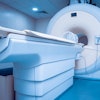Monday, November 26 | 10:00 a.m.-10:10 a.m. | VSMI21-08 | Arie Crown Theater
More than 50% of lesions seen on breast-specific gamma imaging (BSGI) can also be visualized with targeted ultrasound -- a percentage comparable to MRI results, according to researchers from George Washington University.Radiologists use comparison with other imaging modalities such as MRI to target a suspicious lesion visualized with BSGI for biopsy, according to Dr. Rachel Brem and colleagues. As there are similarities between BSGI and MRI (both use physiological parameters and detect breast cancers that mammography misses), and 56% of lesions identified by breast MRI are also found with targeted ultrasound, Brem's group explored how often a BSGI-visualized breast lesion can be found with sonography.
The researchers conducted a retrospective review of patients who underwent BSGI in 2011; the study included all patients who had an area of BSGI-detected radiotracer uptake that warranted targeted ultrasound.
In all, 146 patients with 176 foci of increased radiotracer uptake on BSGI exams underwent targeted ultrasound, which identified 95 (54%) of 176 lesions.
When a focal area of increased radiotracer uptake is seen with BSGI, targeted ultrasound identifies the lesion comparably to MRI, which supports the use of multimodality imaging in the clinical workup of BSGI results, Brem's team concluded.



.fFmgij6Hin.png?auto=compress%2Cformat&fit=crop&h=100&q=70&w=100)





.fFmgij6Hin.png?auto=compress%2Cformat&fit=crop&h=167&q=70&w=250)











